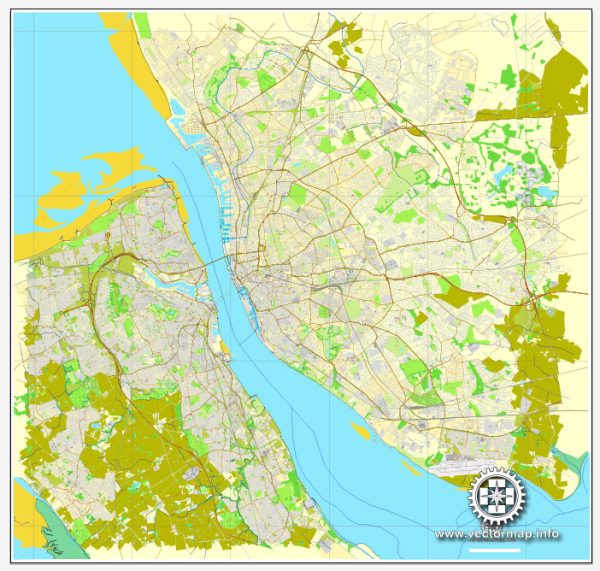The history of urban development in Liverpool, including the area of Birkenhead on the opposite side of the River Mersey, is a fascinating story that spans several centuries. Here’s a brief overview:
- Early History:
- Liverpool’s history dates back to at least the 13th century when it was a small fishing village.
- By the 16th century, it had become a significant port, engaging in trade with Ireland and other parts of Europe.
- 18th Century:
- The 18th century saw the rapid expansion of Liverpool as a major international trading port.
- The construction of the world’s first commercial wet dock, the Old Dock, in 1715 marked a crucial point in the city’s growth, facilitating the handling of a greater volume of goods.
- 19th Century:
- Liverpool’s population exploded during the 19th century due to the booming maritime trade, particularly with the Americas and Africa.
- The construction of multiple docks and warehouses transformed the city’s landscape.
- The growth of the city also attracted waves of immigrants, including Irish and Chinese communities.
- Birkenhead’s Development:
- Birkenhead, situated across the river from Liverpool, also played a significant role in the region’s development.
- The establishment of the first steam ferry service across the Mersey in 1820 improved connectivity between Liverpool and Birkenhead, leading to increased economic interaction.
- Industrialization and Population Growth:
- The Industrial Revolution further fueled Liverpool’s growth, with industries such as shipping, manufacturing, and trade flourishing.
- The population surged as people from rural areas moved to the city in search of employment.
- Victorian Architecture:
- Many of Liverpool’s iconic buildings were constructed during the Victorian era, reflecting the city’s wealth and status.
- The waterfront, in particular, boasts a stunning collection of architectural gems.
- Decline and Regeneration:
- The mid-20th century saw a decline in Liverpool’s fortunes, with the decline of traditional industries and economic hardships.
- However, in recent decades, the city has undergone significant regeneration efforts, revitalizing the waterfront and historic areas.
- Cultural Significance:
- Liverpool’s cultural impact is immense, with the city being the birthplace of The Beatles and home to numerous museums, galleries, and theaters.
- Modern Urban Development:
- Today, Liverpool continues to evolve, with ongoing urban development projects, including commercial and residential spaces, to meet the needs of a modern city.
Understanding the history of urban development in Liverpool, and its connection to Birkenhead, provides valuable insights into the economic, social, and cultural evolution of this vibrant region.


 Author: Kirill Shrayber, Ph.D.
Author: Kirill Shrayber, Ph.D.